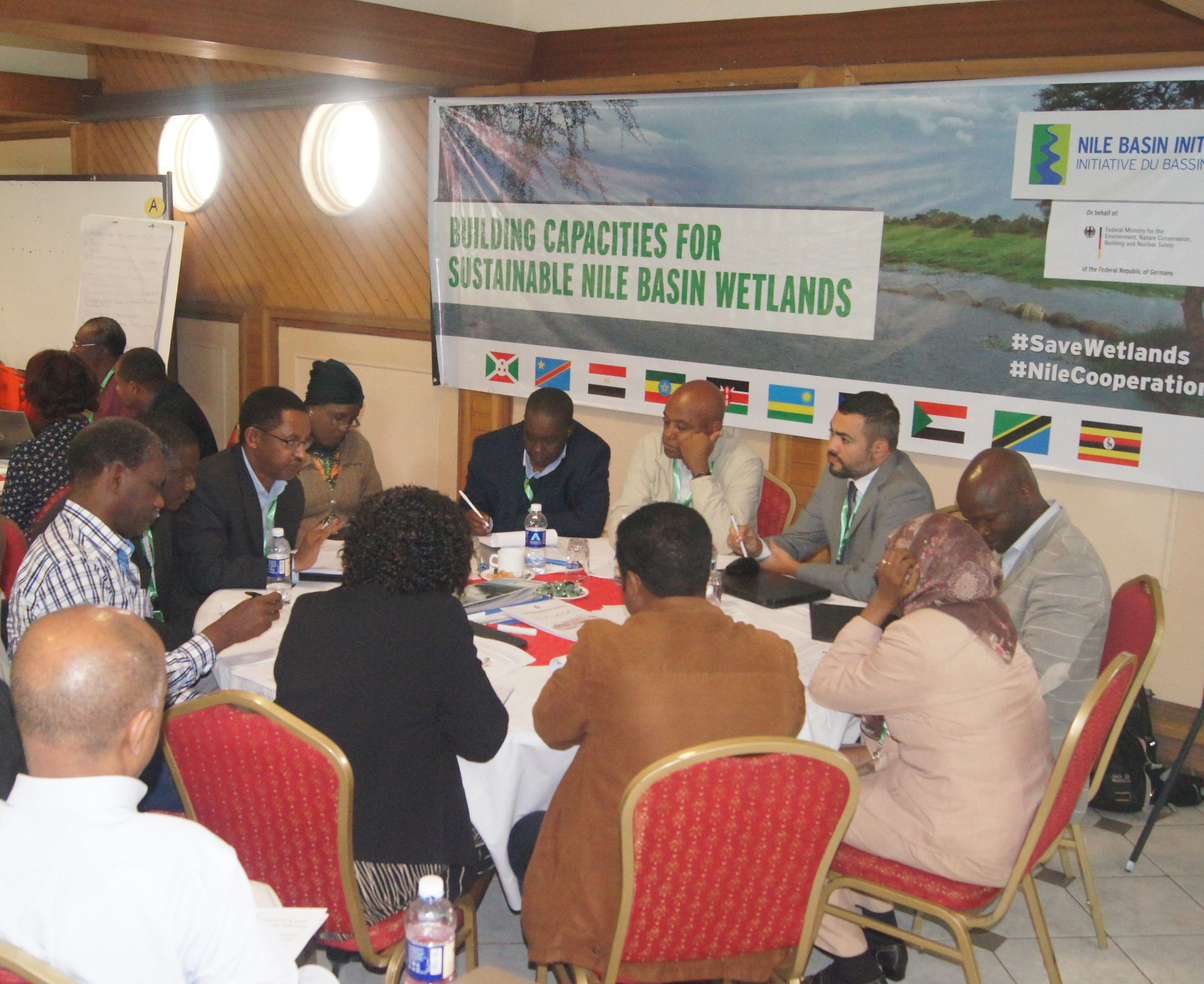The Nile and its most important tributaries flow through several large wetland areas that are vital for biodiversity in the region. These wetlands provide important local and regional ecosystem services, such as regulating the level and quality of water for downstream areas, ensuring the livelihoods of the local population, and providing habitats for various species, some of which are endangered. The way in which these wetlands are managed greatly influences the water discharge of the Nile. At the same time, the ecosystem services they provide rely on a minimum inflow of water.
Through the Nile Basin Initiative (NBI), the Nile riparian states have created a common framework for the coordinated management of their water resources. Central to development planning are the large-scale infrastructure projects for hydropower and irrigation. To date, the knowledge and experience needed to anchor the requirements for protecting the wetlands, and to make greater use of ecosystem services within the planning processes are lacking.
Overall term: 2015 to 2020
Context
The Nile and its most important tributaries flow through several large wetland areas that are vital for biodiversity in the region. These wetlands provide important local and regional ecosystem services, such as regulating the level and quality of water for downstream areas, ensuring the livelihoods of the local population, and providing habitats for various species, some of which are endangered. The way in which these wetlands are managed greatly influences the water discharge of the Nile. At the same time, the ecosystem services they provide rely on a minimum inflow of water.
Through the Nile Basin Initiative (NBI), the Nile riparian states have created a common framework for the coordinated management of their water resources. Central to development planning are the large-scale infrastructure projects for hydropower and irrigation. To date, the knowledge and experience needed to anchor the requirements for protecting the wetlands, and to make greater use of ecosystem services within the planning processes are lacking.
Objective
The technical and institutional capabilities needed to sustainably manage the vital Nile Basin transboundary wetlands are strengthened.

The project’s design incorporates the strategies and targets agreed to by all member states of the Nile Basin Initiative. Measures are being implemented throughout the Nile Basin that aim to develop knowledge and integrate green infrastructure within river basin planning processes. In addition, pilot measures are being carried out within individual transboundary basins located between two countries, primarily in Tanzania, Kenya, Uganda, Democratic Republic of the Congo and South Sudan.
The project makes use of several approaches:
- Developing know-how and capacities among those involved in planning for protecting ecosystem services and utilizing them sustainably
- Improving existing knowledge about the functions, uses and economic values associated with the ecosystem services provided by wetlands, and about the requirements for water management needed to sustain them
- Creating management plans in order to integrate acquired knowledge within policies and strategies for river basin management
- Executing pilot measures to demonstrate how ecosystem services can be utilised, for example for flood prevention
These measures are designed to anchor the idea and potentials of ecosystem services and green infrastructure within cooperative management planning for the Nile and its important transboundary wetlands.

